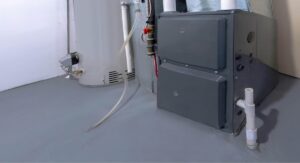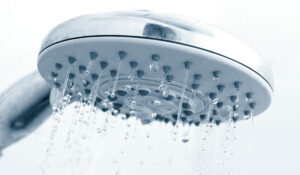When winter’s chill sets in, frozen pipes become a major concern for homeowners. Burst pipes can cause significant water damage, expensive repairs, and unwanted stress. Thankfully, with a little preparation and a few simple steps, you can safeguard your plumbing and avoid winter disasters. Here are essential winter plumbing tips to protect your home from burst pipes.
1. Insulate Exposed Pipes
Exposed pipes in unheated areas are the most vulnerable to freezing temperatures.
- What to do:
- Use foam pipe insulation, heat tape, or insulating sleeves to wrap pipes in crawl spaces, basements, garages, attics, and outdoor areas.
- Don’t forget pipes along exterior walls, as these are also prone to freezing.
- Pro Tip: Heat tape with a thermostat is especially effective as it warms pipes when temperatures drop below freezing.
- Why it works: Insulation helps maintain the temperature of your pipes, reducing the risk of freezing.
2. Keep a Trickle of Water Running
Running water, even at a slow trickle, can prevent pipes from freezing.
- What to do:
- Let faucets drip slightly when temperatures dip below freezing, especially for pipes on exterior walls or in unheated areas.
- Use both hot and cold water lines to keep the water moving.
- Pro Tip: Target faucets farthest from your water source, as this helps circulate water throughout your system.
- Why it works: Flowing water is less likely to freeze compared to standing water.
3. Open Cabinet Doors
Cold air can get trapped in cabinets, leaving pipes exposed to freezing temperatures.
- What to do:
- Leave kitchen and bathroom cabinet doors open to allow warm air to circulate around the pipes.
- If you have small children or pets, move any harmful cleaning products out of reach.
- Why it works: Warm air from your home helps prevent pipes under sinks or along exterior walls from freezing.
4. Maintain a Consistent Indoor Temperature
Sudden drops in indoor temperatures can put pipes at risk.
- What to do:
- Keep your thermostat set to at least 55°F (13°C), even when you’re not home or away for an extended time.
- Avoid drastic temperature changes—maintain consistent warmth throughout the day and night.
- Pro Tip: Use a programmable or smart thermostat to control temperatures while conserving energy.
- Why it works: Consistent warmth ensures your pipes are protected, even during overnight freezes.
5. Disconnect and Drain Outdoor Hoses
Outdoor plumbing is the first to freeze when temperatures plummet.
- What to do:
- Disconnect garden hoses from outdoor spigots and drain any remaining water.
- Shut off outdoor water valves, if available, and drain pipes leading to outdoor faucets.
- Use insulated faucet covers to protect outdoor spigots.
- Why it works: Draining water and disconnecting hoses prevents ice from forming inside pipes and causing pressure buildup.
6. Seal Cracks and Gaps
Cold drafts can creep into your home and freeze pipes near walls or unheated areas.
- What to do:
- Inspect your home for cracks, gaps, or openings around pipes, vents, windows, and doors.
- Use caulking, weatherstripping, or spray foam insulation to seal these openings.
- Pro Tip: Pay close attention to areas near the foundation, basement, or crawl spaces where drafts are common.
- Why it works: Sealing drafts keeps cold air out and warm air in, reducing the risk of frozen pipes.
7. Know How to Shut Off Your Water
Quick action can minimize damage if a pipe does burst.
- What to do:
- Locate your main water shut-off valve (usually in the basement, garage, or near the water meter).
- Test it to ensure it works properly and share its location with everyone in your household.
- Pro Tip: Keep a wrench handy if your shut-off valve isn’t easy to turn.
- Why it works: Shutting off the water immediately stops further flooding and limits property damage.
8. Install a Smart Water Monitor
Modern technology can help detect issues before they escalate.
- What to do:
- Install a smart water monitor or leak detector that alerts you to unusual water flow or leaks.
- Some models can automatically shut off the water supply if a leak is detected.
- Why it works: Early detection helps prevent costly damage from burst pipes or leaks.
9. Heat Unused or Vulnerable Spaces
Keep cold-prone areas like basements, crawl spaces, and garages warm.
- What to do:
- Use space heaters in unheated areas to maintain safe temperatures.
- Keep garage doors closed to trap heat and protect pipes running through the space.
- Pro Tip: For long-term solutions, consider adding insulation to unheated areas.
- Why it works: Raising temperatures in vulnerable spaces reduces the chance of freezing.
10. Insulate Water Heaters and Pipes
Water heaters and pipes in unheated spaces can lose efficiency or freeze during winter.
- What to do:
- Wrap your water heater in an insulation blanket to prevent heat loss.
- Insulate hot water pipes to improve efficiency and reduce freezing risks.
- Why it works: Insulation keeps your water heater functioning efficiently while protecting pipes from extreme cold.
11. Thaw Frozen Pipes Safely
If you suspect a frozen pipe, quick action can help prevent it from bursting.
- What to do:
- Turn off the water supply immediately.
- Use a hair dryer, space heater, or heated towel to thaw the frozen section. Start at the faucet end and work backward.
- Never use open flames or high-heat devices, as these can damage pipes or cause fires.
- Why it works: Gentle thawing restores water flow without damaging pipes.
12. Schedule a Professional Inspection
For peace of mind, consider hiring a plumber to inspect your pipes before winter hits.
- What to do:
- Have a plumber check for leaks, weak spots, or pipes that may need extra insulation.
- Discuss preventative measures, like installing a pressure-relief valve to protect pipes.
- Why it works: A professional inspection ensures your plumbing is winter-ready and reduces the risk of emergencies.
Final Thoughts: Stay Ahead of Winter Plumbing Problems
Winter-proofing your plumbing doesn’t have to be complicated. With simple steps like insulating pipes, maintaining indoor temperatures, and knowing how to shut off your water, you can protect your home from burst pipes and costly repairs. A little preparation goes a long way in keeping your plumbing safe and your home warm all season long. Stay proactive, and enjoy a worry-free winter!









